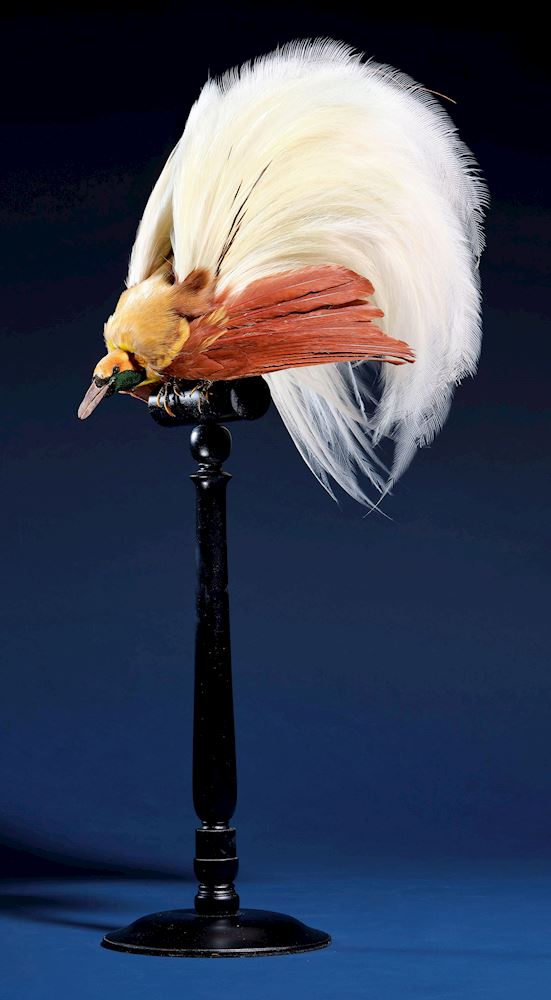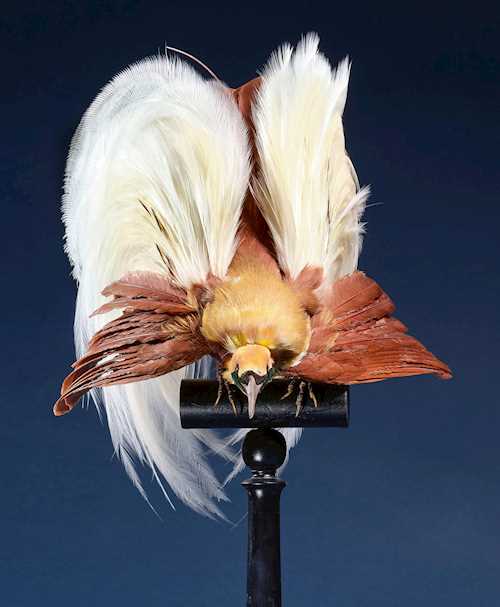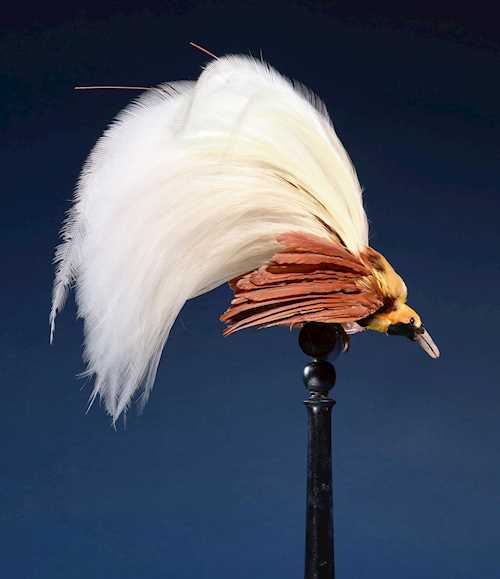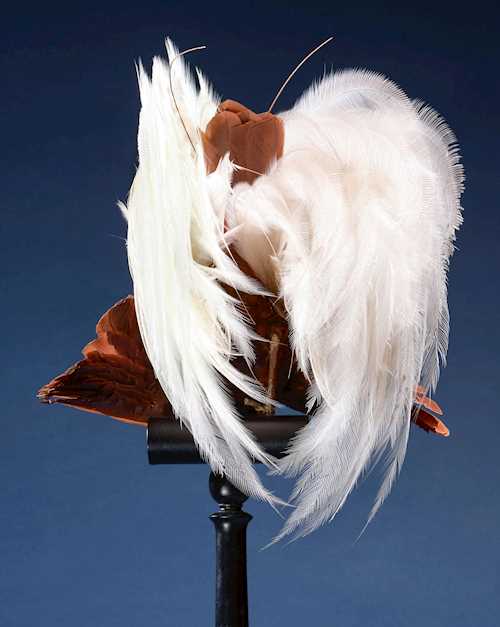
Lot 831* ♣ - A207 Out of This World - Monday, 04. December 2023, 04.00 PM
GREATER BIRD OF PARADISE
Paradisea apoda
Circa 1950
67 × 34 × 28 cm (including stand)
Circa 1950
67 × 34 × 28 cm (including stand)
For the exportation of this item a CITES license is required. Prospective buyers should familiarize themselves with relevant customs regulations prior to bidding if they intend to import this lot into another country. For further information please contact the department.
Provenance: Old Swiss school collection
The great bird of paradise belongs to the genus Paradisaea and inhabits the lush tropical rainforest in large parts of the lowlands in southern New Guinea as well as the Aru Islands off the coast of New Guinea. While the female has a rather plain brown plumage, the male with his shimmering emerald–green throat, chestnut–coloured body plumage and spectacular yellowish–white flank plumes not only impresses his mate during a colourful and very vocal courtship but is also admired by humans for his opulence and beauty.
Even today, leaders of indigenous ethnic groups of New Guinea wear the feathers of the greater bird of paradise as headdresses at ceremonial occasions. They believe he was sent to them from heaven. When this legend spread to Europe, it became known as the bird of paradise. Since the first specimens sent to Europe for preservation arrived without feet, the misconception arose that this bird also floats ‘footless’ in the wild. It was even given the binary nomenclature Paradisea apoda by the Swedish naturalist Carl Linnaeus in 1758 (the Greek word ‘apoda’ meaning footless). The error was cleared up relatively quickly, but the name remained.
One of the most prevalent traits of this fascinating specimen is the beautifully preserved, characteristic flank plumes, which the bird vividly displays in its naturalistic pose. Taxidermized circa 1950, it has recently been carefully restored by a Swiss taxidermist.
The great bird of paradise belongs to the genus Paradisaea and inhabits the lush tropical rainforest in large parts of the lowlands in southern New Guinea as well as the Aru Islands off the coast of New Guinea. While the female has a rather plain brown plumage, the male with his shimmering emerald–green throat, chestnut–coloured body plumage and spectacular yellowish–white flank plumes not only impresses his mate during a colourful and very vocal courtship but is also admired by humans for his opulence and beauty.
Even today, leaders of indigenous ethnic groups of New Guinea wear the feathers of the greater bird of paradise as headdresses at ceremonial occasions. They believe he was sent to them from heaven. When this legend spread to Europe, it became known as the bird of paradise. Since the first specimens sent to Europe for preservation arrived without feet, the misconception arose that this bird also floats ‘footless’ in the wild. It was even given the binary nomenclature Paradisea apoda by the Swedish naturalist Carl Linnaeus in 1758 (the Greek word ‘apoda’ meaning footless). The error was cleared up relatively quickly, but the name remained.
One of the most prevalent traits of this fascinating specimen is the beautifully preserved, characteristic flank plumes, which the bird vividly displays in its naturalistic pose. Taxidermized circa 1950, it has recently been carefully restored by a Swiss taxidermist.
To see this Object in a Video, click here
CHF 2 500 / 3 500 | (€ 2 580 / 3 610)
Sold for CHF 3 500 (including buyer’s premium)
All information is subject to change.





